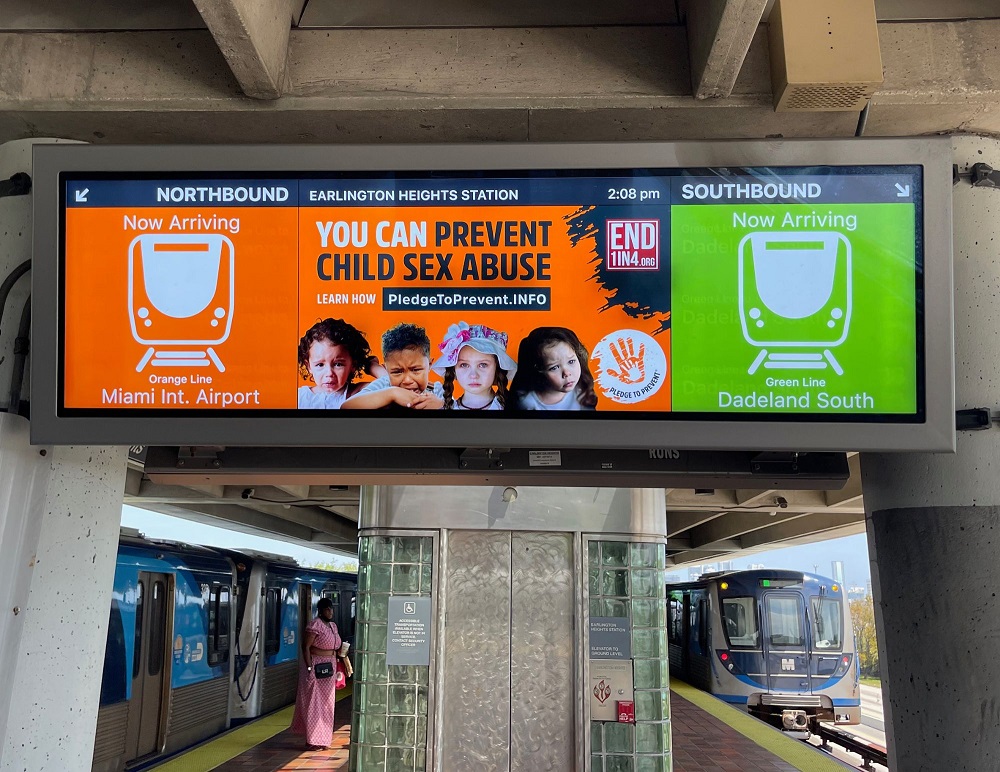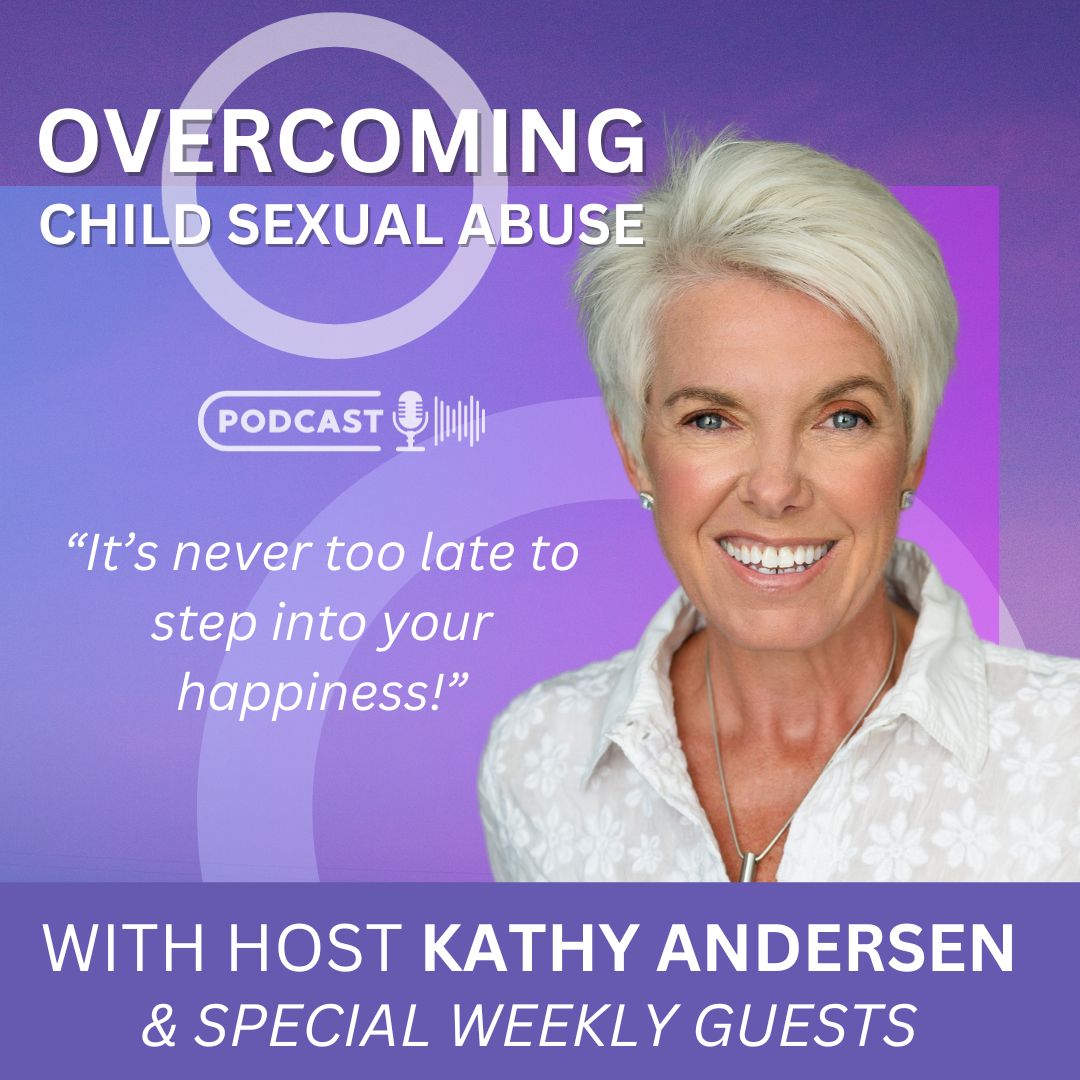Keeping Child Sexual Abuse Awareness and Prevention “Out of Silence” and “Up in Lights” Might Just Spare Your Child
By KATHY ANDERSEN | Founder of End1In4.org


As April National Child Abuse Prevention Month ends, we all have a role to play in keeping child sexual abuse awareness and prevention “out of silence” and “up in lights” so that we are not complicit enablers, but vigilant child protectors. If nothing else, think of it this way: that you are the one person who can stand in the way of a perpetrator—of your child, or one close to you. Here’s why: with as many as one in four children falling prey to sexual abuse, it’s likely happening among your family and friends, What’s more, the signs are likely in plain sight of you each day, but you might just be missing them or “innocently” dismissing them. Yet, your awareness and action could make the difference between a child’s painful and preventable suffering or the opportunity for freedom, healing, and happiness.
It’s difficult. Child sexual abuse is not an easy topic to talk about or confront, but it’s one we can’t afford to ignore. As parents, caregivers, teachers, clergy, and members of our diverse and growing magic city of Miami, we need to be ever-more aware and vigilant in order to protect our children. For each of us, that means being courageous enough to act for a child who cannot act for themselves. Research shows that victims are least likely to directly ask for help directly because of the fear and manipulation that entraps them. They will, however, show you the signs. Will you see them?
 Too confronting to see? Ask yourself this: if someone had a sense that your little girl or boy may be a victim of child sexual abuse, would you rather they bring it to your attention, or dismiss it? Think of it this way: perpetrators are almost always known to the family (93 percent are in or close to the family) and so sadly, this means that those close to you are either those who are abusers, or those who are guardians with the opportunity to see the signs and reach out to help. The only other act is complicit silence. You don’t need to be sure to reach out, you just need to suspect—and most of the time, your suspicions will be more right than wrong.
Too confronting to see? Ask yourself this: if someone had a sense that your little girl or boy may be a victim of child sexual abuse, would you rather they bring it to your attention, or dismiss it? Think of it this way: perpetrators are almost always known to the family (93 percent are in or close to the family) and so sadly, this means that those close to you are either those who are abusers, or those who are guardians with the opportunity to see the signs and reach out to help. The only other act is complicit silence. You don’t need to be sure to reach out, you just need to suspect—and most of the time, your suspicions will be more right than wrong.
Throughout April, an outdoor awareness campaign across Miami-Dade placed the issue “up in lights” and “out and about”—on every Miami Metrorail station and on Airport Expressway billboards. The campaign asks everyone to think twice and consider the signs: Your Child—Angry or Sexually Abused? Your Child—A Loner or Sexually Abused? Your Child—Afraid or Sexually Abused? You’ll also see a call to take a Pledge To Prevent—to learn more, share information, build a local movement, or affect policy. Still not sure what to do? The campaign shares an easy-recall number, (240) END-1IN4, to talk things through with professionals from the Childhelp National Child Abuse hotline.
You might be thinking, “This doesn’t happen among my family or friends.” Think again. The data say otherwise. Child sexual abuse knows no boundaries. It happens in big cities and small towns, in wealthy neighborhoods and low-income areas. Victims are groomed into trust, silence, and compliance by perpetrators close to them—a family member, a friend, a teacher, or even a coach. And, perpetrators have probably groomed you into trust, too. That’s why it’s so important to be vigilant and not dismiss potential red flags just because the abuser is someone familiar.
The statistics on child sexual abuse are abhorrent. Children are most vulnerable to abuse between the ages of 7 and 13, and the median age for reported abuse is 9 years old. More than 20% of children are abused before the age of 8— yes, that’s a third grader, and even a first grader.
Here’s the thing: we can’t afford not to act because of the fear or discomfort that enables abuse to continue. If you suspect that a child is being abused, don’t look the other way. Trust your instincts and take action. Reach out to hotlines; or report your concerns—whether to child protective services or law enforcement, and let them handle the situation with expert, trauma-informed interventions and solutions.
So, as April National Child Abuse Prevention Month ends, let’s not end our opportunity to come together to see the abuse and end it. Consider taking the Pledge To Prevent at www.PledgeToPrevent.info, learn just how much you can do, and take action to end child sexual abuse. The choice and the power are in our hands, and our children are counting on us.
——–
For 24/7 help and support, and to report abuse, reach out to the 24-hour Childhelp National Child Abuse Hotline by calling (240) END-1IN4. If you or someone you know is struggling or in crisis, call or text 988, the 24/7 Suicide & Crisis Lifeline. In an emergency, call 911. For more information and a range of local and national resources, visit www.END1IN4.org.


